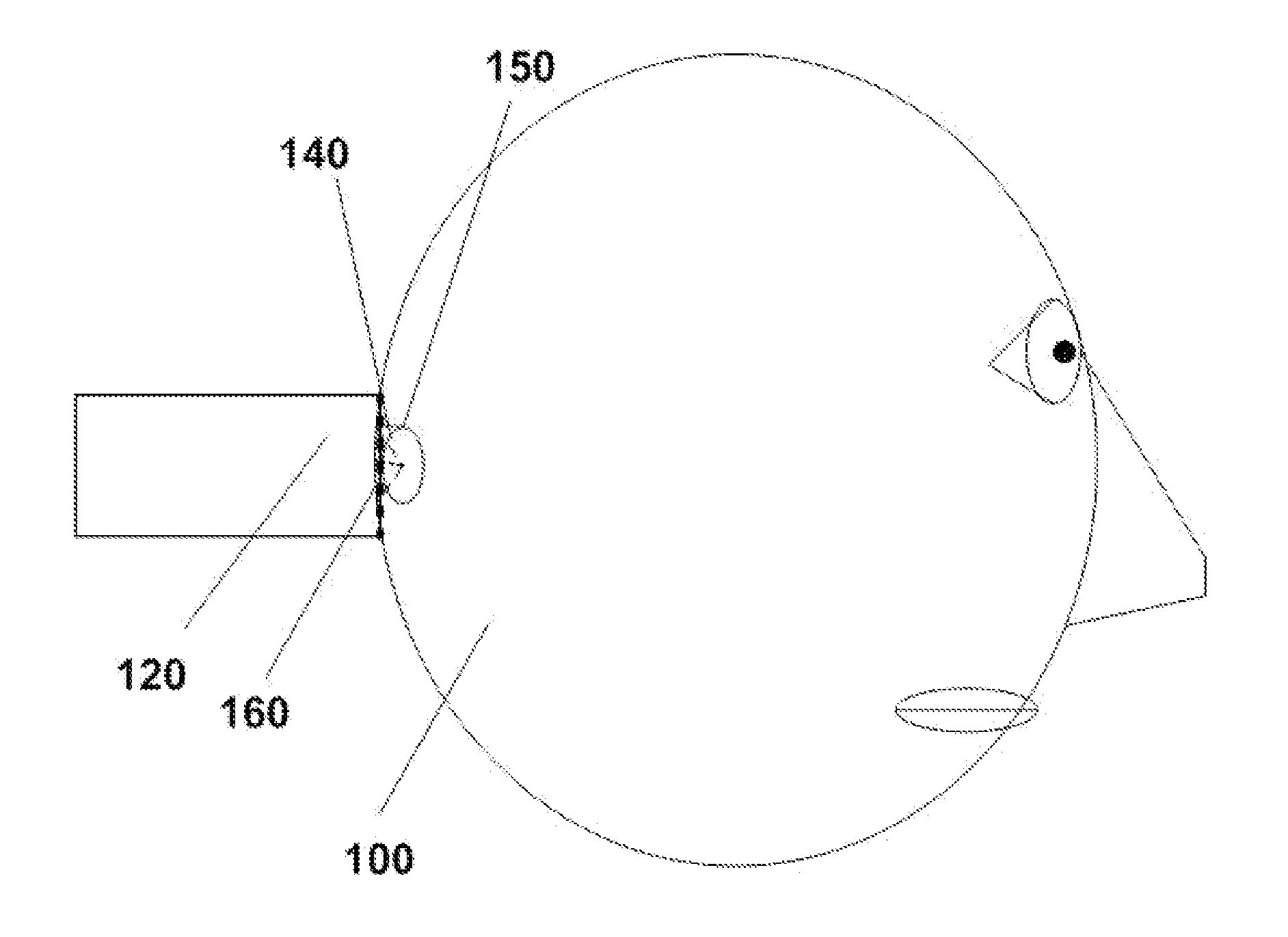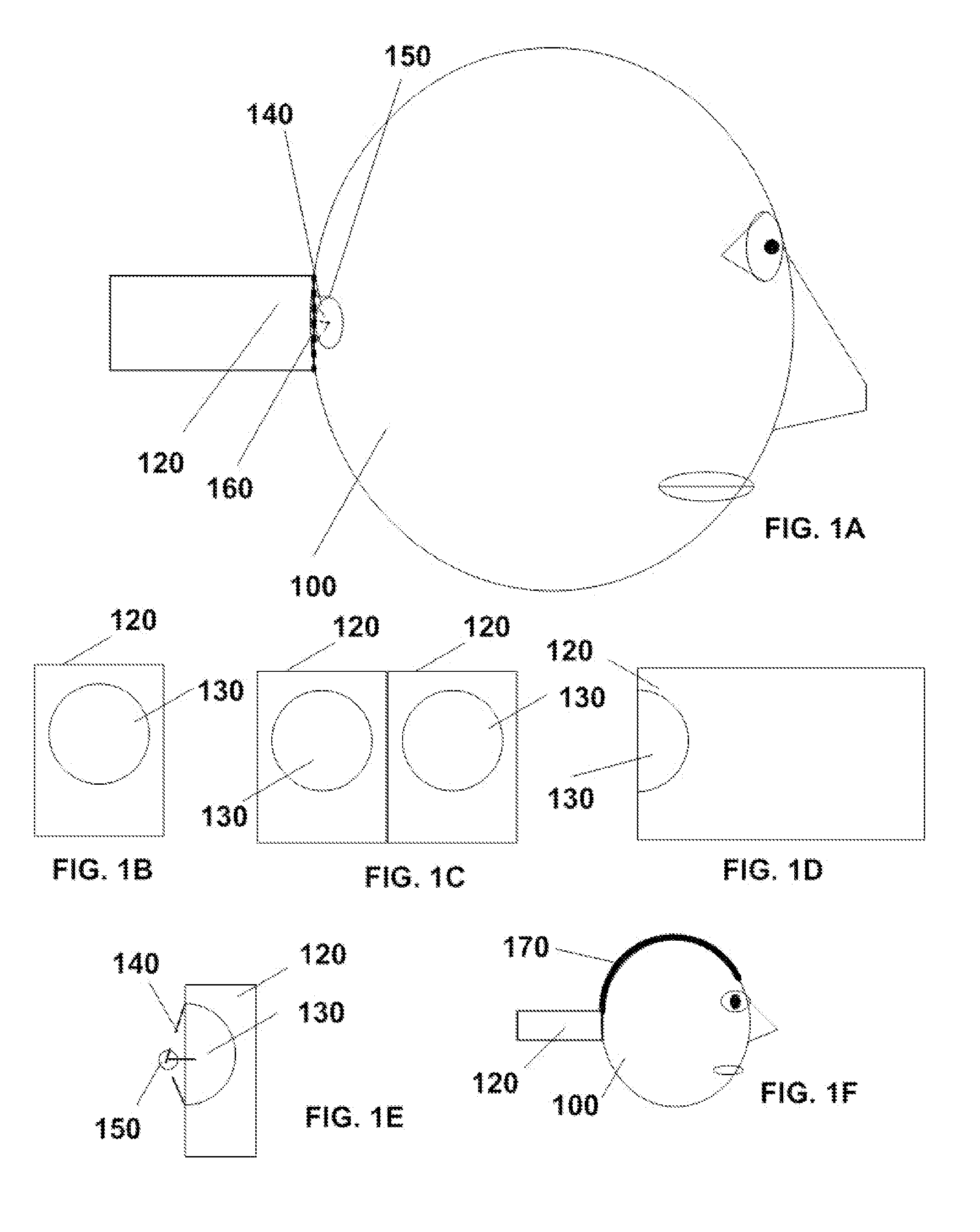Ultrasound neuromodulation of the occiput
a neuromodulation and ultrasonic technology, applied in the field of ultrasonic neuromodulation can solve the problems of increasing neural activity, not always predictive of whether the longer-term electrical stimulation of the occipital nerve will be successful, and inability to predict whether the longer-term stimulation will be successful
- Summary
- Abstract
- Description
- Claims
- Application Information
AI Technical Summary
Benefits of technology
Problems solved by technology
Method used
Image
Examples
Embodiment Construction
[0021]It is the purpose of this invention to provide methods and systems and methods for ultrasound neuromodulation of the occipital nerves. The neuromodulation of the occipital nerves in turn neuromodulates connected intracranial structures to obtain therapeutic results.
[0022]The acoustic frequency (e.g., typically in that range of 0.3 MHz to 0.8 MHz whether cranial bone is to be penetrated or not) is gated at the lower rate to impact the neuronal structures as desired. A rate of 300 Hz (or lower) causes inhibition (down-regulation) (depending on condition and patient). A rate in the range of 500 Hz to 5 MHz causes excitation (up-regulation)). Power is generally applied at a level less than 60 mW / cm2. Ultrasound pulses may be monophasic or biphasic, the choice made based on the specific patient and condition. Ultrasound stimulators are well known and widely available.
[0023]FIG. 1A shows a saggital view of the configuration for neuromodulation of the occipital nerve. Patient head 10...
PUM
 Login to View More
Login to View More Abstract
Description
Claims
Application Information
 Login to View More
Login to View More - R&D
- Intellectual Property
- Life Sciences
- Materials
- Tech Scout
- Unparalleled Data Quality
- Higher Quality Content
- 60% Fewer Hallucinations
Browse by: Latest US Patents, China's latest patents, Technical Efficacy Thesaurus, Application Domain, Technology Topic, Popular Technical Reports.
© 2025 PatSnap. All rights reserved.Legal|Privacy policy|Modern Slavery Act Transparency Statement|Sitemap|About US| Contact US: help@patsnap.com



